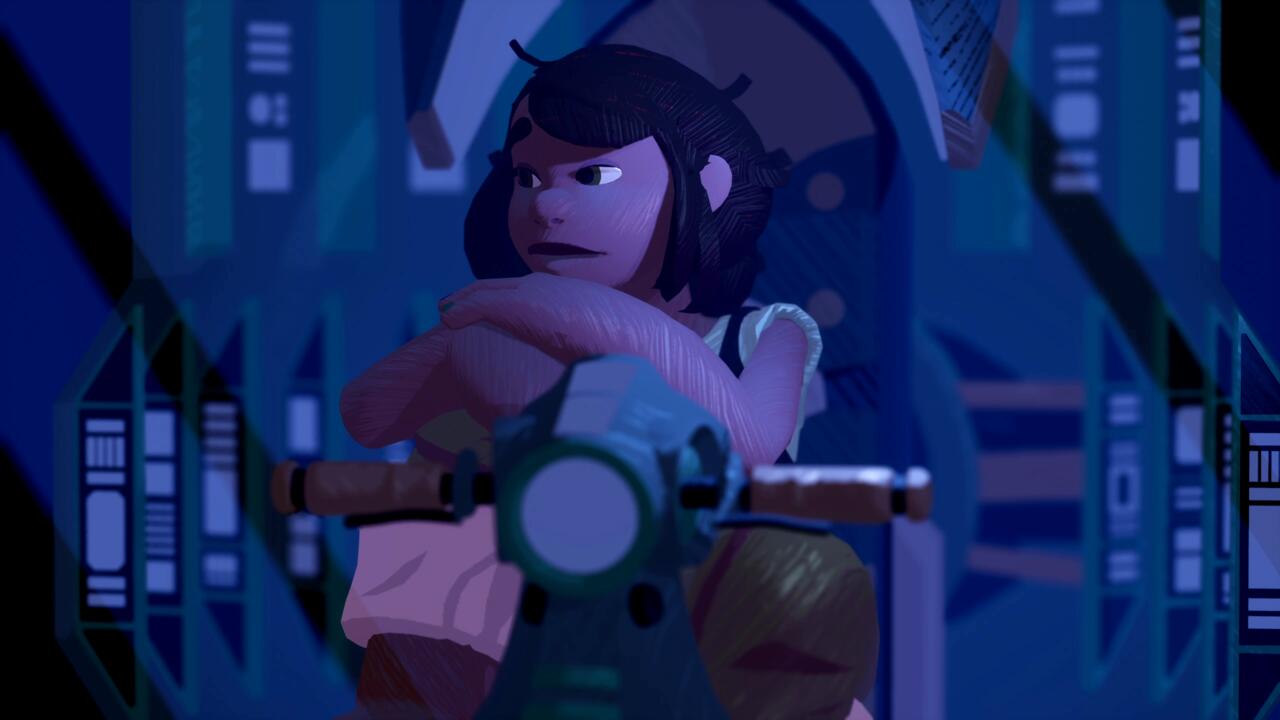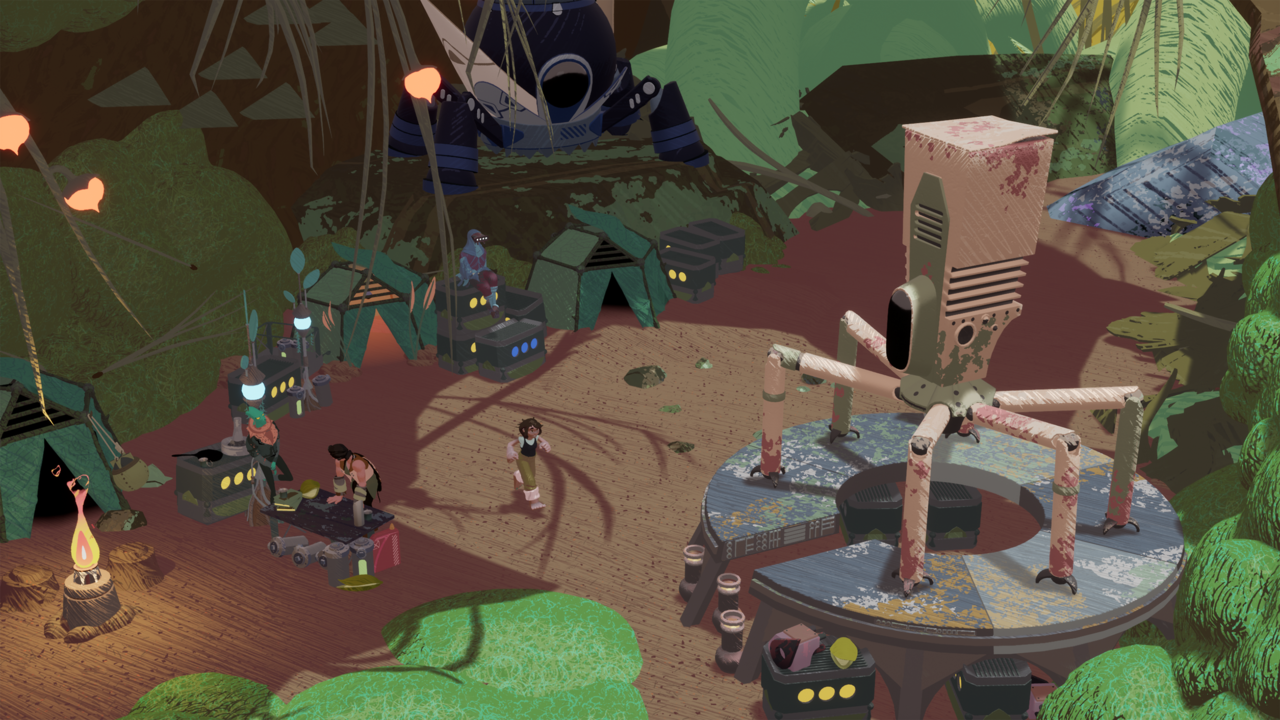Stonefly's Music Might Be Its Best Part, Says Creative Director
Stonefly's original soundtrack was built around capturing the emotional beats of its story.
Stonefly--a new game from Flight School Studio and publisher MWM Interactive--is now out; it sees a young inventor set out into the world for the first time in order to recover her father's lost mech. In Stonefly, everyone is incredibly small in stature, so they pilot mechs to protect themselves from the much larger, more dangerous insects. Of what I've played so far, it's an intriguing story, one that's partially told via the game's music.
Ahead of Stonefly's release I sat down for two interviews--one over video chat and the other via email--with creative director Adam Volker, game designer Mel Ramsden, and game director Bohdon Sayre. I asked them about Stonefly's music and how it ties into the game's storytelling, as well as the making of protagonist Annika Stonefly.
"I honestly think the music might be the best part of the whole experience," Volker told me. "I'm so excited for people to hear this game. Characters don't have themes. We decided to build the music around the places Annika visited and the emotional beats of the plot of the story. You hear more about Annika in the music than any of the characters but it's more about what she's feeling--when she's in Woodruff, it's homey, it's familiar, it's warm. When she's in the Marshes, she is the furthest from home she's ever been, so the music is darker, it's scarier, it's ambient. The musical journey is mostly from Ann's point of view."
Stonefly doesn't feature voice acting so the designers turned to the music, artistic style, and gameplay to augment the written dialogue. The theme of wind, for example, plays a part in both gameplay and the narrative.
"Many parts of the story are about letting go of the past and the change from heaviness to lightness, which emotionally lines up with the themes of wind," Sayre wrote. "Being stuck and slow is in direct contrast to freely flowing wind, and we use that in gameplay as well, where one of the main status effects you run into is being covered in goo and unable to fly away. This matches well with Annika being unable to escape the situation she doesn't want to be in, and needing to find a path through it to some emotional clarity she didn't know she was looking for. She does this quite literally by going with the flow of wind and being open to where it takes her."
"[Voice acting] definitely is a potent force for communicating character, but at the end of the day if comic books can tell dramatic stories with just text, then we can too," Volker added.
While talking to the devs, I mentioned how one of my favorite shots of Stonefly is of Annika sitting down, arms crossed, head on her hands. She's just staring in contemplative silence, and the lighting casts the shot in a soft glow of blues and purples. Though much of Stonefly's gameplay is about pushing bugs off tree branches, Volker said that shots like these capture the focus of Stonefly's story, which is an internal conflict. This is a story about a young girl learning what her place in the world is and figuring out where her moral compass ultimately lies.

"We tried to provide a lot of context for how Annika might be feeling to show off her mental and emotional state," Volker said. "The scenes in her tent are when she is alone with her thoughts. We used the dreams there to give her an internal monologue that helps players understand where she is at. We hoped it gave a picture of a rounder character. Someone who is able to act one way during their day but has a lot going on in their heart and head."
Ramsden added that the story won't just take place in Annika's head. There's a bit of a loop-like structure to Stonefly. Early on in the story, Annika stumbles onto a traveling troupe of mech pilots called the Acorn Corps. She joins them, returning to their camp in between outings to rest and upgrade her mech. When she returns, conversations can spark between her and the members of the troupe.
"There's an element of the traditional linear story sense here where you do go out and when you come back you'll get a little extra story--you'll have completed the mission so something will happen," Ramsden told me. "But there's also the addition of the Patrols, which are a little bit more player-driven in terms of pace because they're nonlinear, a little bit more sandbox-like. So when you go out on a Patrol with a goal in mind, you can complete that goal as quickly or as slowly as you want."

Because of these optional Patrols, Stonefly's overall narrative is composed of nonlinear story beats and a linear story-driven campaign. The narrative is designed to shift to the player's expectations. Everything ties back to Annika and her emotional and mental journey, but you can gain a bit more insight into the world at large around her by taking the time to explore off the beaten path.
"I hope those moments feel like it's your call," Ramsden said. "If you want to proceed through the story right away, you can absolutely go forth and complete it as fast as you can but if you'd like to just spend more time in the world and maybe not progress outside of an area right away, then you totally can and there's stuff that you can do and you can wander around and find it. And then, when you feel good and satisfied, you can cash in your quest or go find the item, and then go to the next new area and do the same thing. So it's a bit of a hybrid in terms of the pace of the narrative--it's linear but there are non-linear beats."
I'm enjoying Stonefly so far--it possesses a wonderful blend of musical storytelling, gameplay design, and artistic style. The game is available on Xbox Series X|S, Xbox One, PS5, PS4, Switch, and PC (Steam and Epic Games Store).
Got a news tip or want to contact us directly? Email news@gamespot.com
Join the conversation